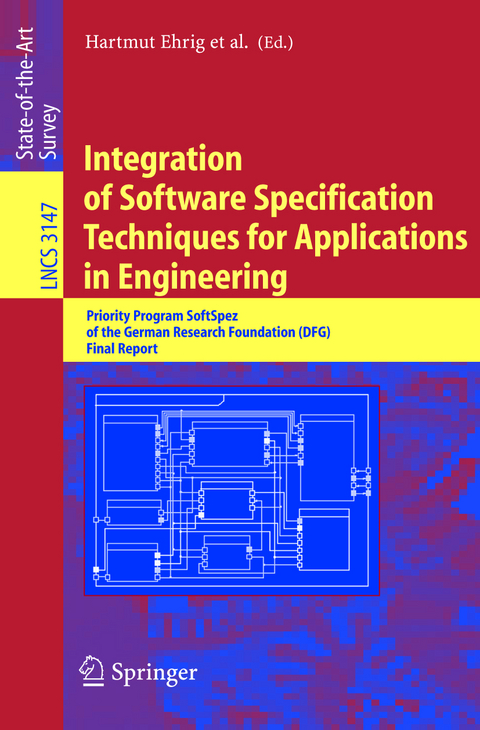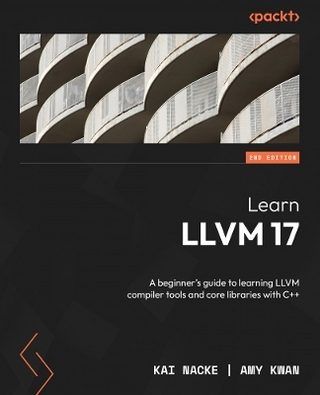
Integration of Software Specification Techniques for Applications in Engineering
Springer Berlin (Verlag)
978-3-540-23135-6 (ISBN)
Integration of Software Specification Techniques for Applications in Engineering: Introduction and Overview of Results.- Integration of Software Specification Techniques for Applications in Engineering: Introduction and Overview of Results.- I: Reference Case Study Production Automation.- Basic Principles for Software Specification.- Challenges of Next Generation Manufacturing Systems.- Development of Hierarchical Broadcasting Software Architectures Using UML 2.0.- An Engineer's Workstation to Support Integrated Development of Flexible Production Control Systems.- A Formal Component Concept for the Specification of Industrial Control Systems.- II: Reference Case Study Traffic Control Systems.- Specification Methodology, Case Studies, and Experiments - An Introduction to the Subject Area of Traffic Control Systems.- Reference Case Study "Traffic Control Systems" for Comparison and Validation of Formal Specifications Using a Railway Model Demonstrator.- Precise Definition of the Single-Track Level Crossing in Radio-Based Operation in UML Notation and Specification of Safety Requirements.- Executable HybridUML and Its Application to Train Control Systems.- The Use of UML for Development of a Railway Interlocking System.- III: Petri Nets and Related Approaches in Engineering.- Process Description Languages and Methods: Introduction to the Chapter Petri Nets and Related Approaches in Engineering.- Specification and Formal Verification of Temporal Properties of Production Automation Systems.- STOP - Specification Technique of Operational Processes.- Specification and Validation of an Edge Router Discovery Protocol for Mobile Ad Hoc Networks.- A Guide to Modelling and Control with Modules of Signal Nets.- Conceptual Design of an Engineering Model for Product andPlant Automation.- IV: Charts.- to Subject Area "Charts".- The Rhapsody Semantics of Statecharts (or, On the Executable Core of the UML).- Interactive Verification of Statecharts.- Live Sequence Charts.- A Unifying Semantics for Sequential Function Charts.- V: Verification.- to Subject Area "Verification".- "UML-ising" Formal Techniques.- Model Based Formal Verification of Distributed Production Control Systems.- Combining Formal Methods and Safety Analysis - The ForMoSA Approach.- Formal Verification of LSCs in the Development Process.- Verification of PLC Programs Given as Sequential Function Charts.- Modeling and Formal Verification of Production Automation Systems.- VI: Integration Modeling.- On Model Integration and Integration Modelling.- On the Integration of Modular Heterogeneous Specifications.- Semantical Integration of Object-Oriented Viewpoint Specification Techniques.
| Erscheint lt. Verlag | 22.9.2004 |
|---|---|
| Reihe/Serie | Lecture Notes in Computer Science |
| Zusatzinfo | X, 630 p. |
| Verlagsort | Berlin |
| Sprache | englisch |
| Maße | 155 x 235 mm |
| Gewicht | 915 g |
| Themenwelt | Mathematik / Informatik ► Informatik ► Software Entwicklung |
| Informatik ► Theorie / Studium ► Compilerbau | |
| Schlagworte | control systems • engineering systems • formal specification • Formal Verification • Hardcover, Softcover / Informatik, EDV/Informatik • HC/Informatik, EDV/Informatik • HC/Informatik, EDV/Programmiersprachen • Modeling • Petri net • Petri Nets • Software Architectures • Software Engineering / Softwareentwicklung • Softwareentwicklung • Software Specification • Specification Languages • specification techniques • Statecharts • Systems Specification • traffic control systems • train control systems • UML • unified modeling language (UML) • verification |
| ISBN-10 | 3-540-23135-8 / 3540231358 |
| ISBN-13 | 978-3-540-23135-6 / 9783540231356 |
| Zustand | Neuware |
| Haben Sie eine Frage zum Produkt? |
aus dem Bereich


